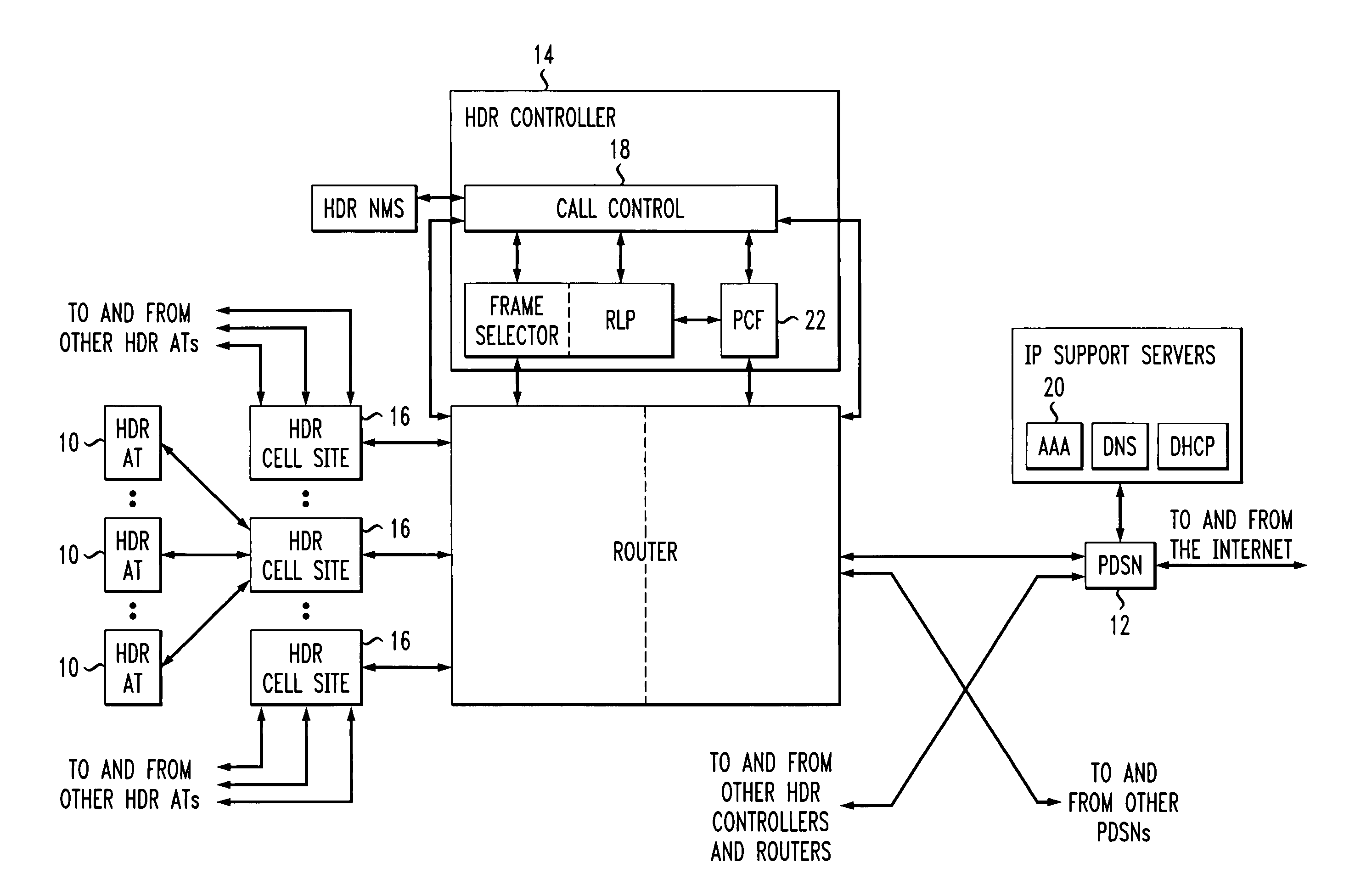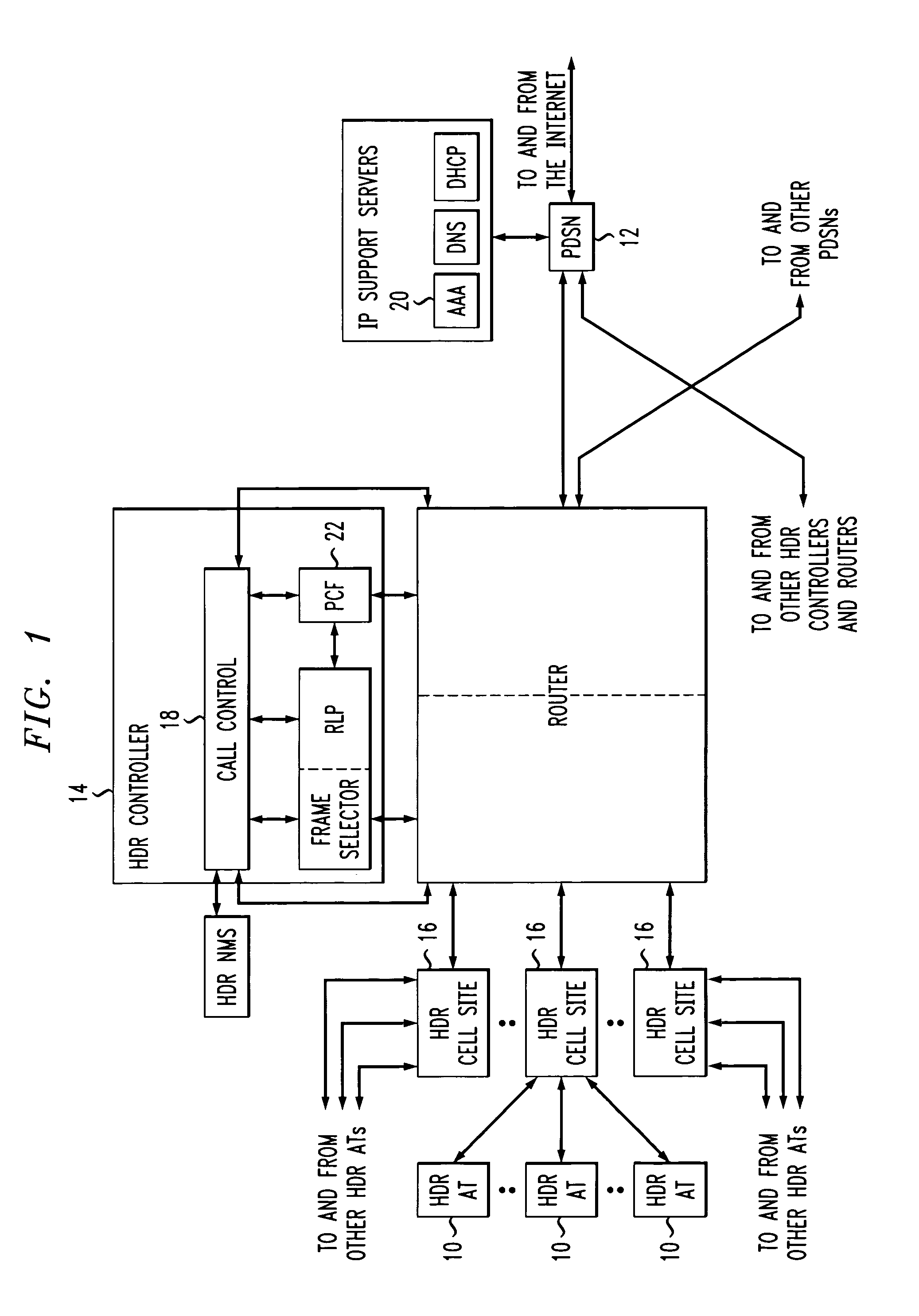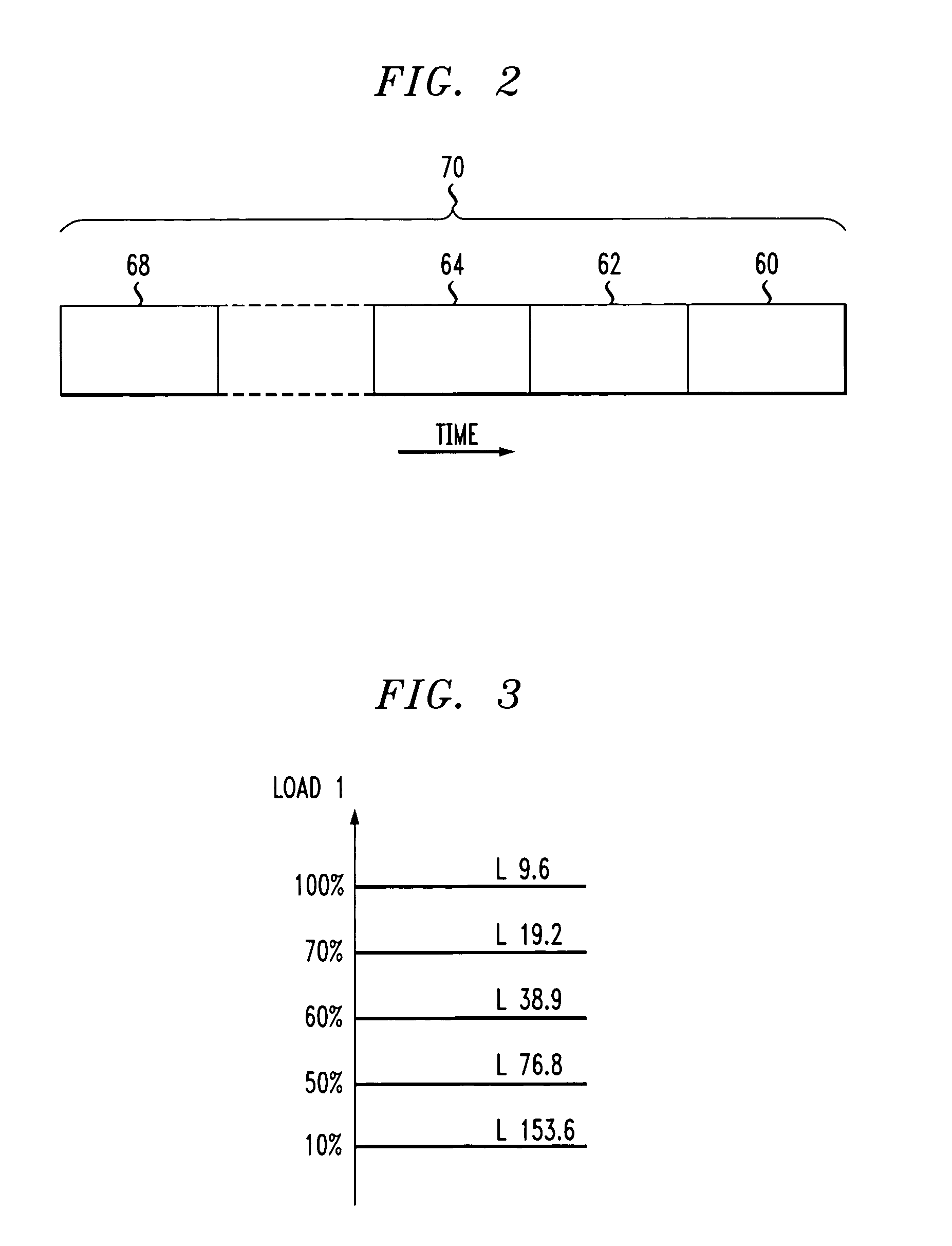Dynamic reverse link rate limit algorithm for high data rate system
a dynamic reverse link and rate limit technology, applied in the field of mobile telephone systems, can solve the problems of limiting the capacity of the reverse link, increasing the probability of frame errors in the voice data received by the cell, and limiting the number of users able to gain access to the communication system, so as to achieve the effect of minimizing irregularities
- Summary
- Abstract
- Description
- Claims
- Application Information
AI Technical Summary
Benefits of technology
Problems solved by technology
Method used
Image
Examples
Embodiment Construction
[0019]A High Data Rate (HDR) system shares the same spectrum with an IS-95 / IS-2000 / 3G-1X system by using a separate 1.25 MHz frequency dedicated to HDR. The HDR forward link uses a single shared channel which always transmits at full power (except for the power control bits). Users are time-multiplexed on the forward channel (instead of code division access) so as to achieve a higher data throughput for a single user. There is no softer / soft handoff on the forward link, since the mobile station only listens to one forward link at any given time. The transmission data rate on the forward link as well as which sector is the next desired transmitting forward link is determined by the mobile, by an algorithm which takes into account the RF conditions and other factors. Then the mobile indicates the desired rate and serving sector via the Reverse Data Rate Control Channel. The base station controls and selects which user's data is to be transmitted in the next forward link slot by a sche...
PUM
 Login to View More
Login to View More Abstract
Description
Claims
Application Information
 Login to View More
Login to View More - R&D
- Intellectual Property
- Life Sciences
- Materials
- Tech Scout
- Unparalleled Data Quality
- Higher Quality Content
- 60% Fewer Hallucinations
Browse by: Latest US Patents, China's latest patents, Technical Efficacy Thesaurus, Application Domain, Technology Topic, Popular Technical Reports.
© 2025 PatSnap. All rights reserved.Legal|Privacy policy|Modern Slavery Act Transparency Statement|Sitemap|About US| Contact US: help@patsnap.com



